Wall St futures flat amid US-China trade jitters; bank earnings in focus
Introduction & Market Context
INmune Bio Inc (NASDAQ:INMB) presented its corporate strategy and clinical progress in August 2025, highlighting advances across its three immunomodulatory platforms. The biotech company, which focuses on harnessing the innate immune system to treat various diseases, has seen its stock experience significant volatility in recent months, with shares closing at $2.79 on August 7, 2025, well below analyst targets of $20-30.
Despite reporting improved financial results in Q1 2025 with a narrowed net loss of $9.7 million (compared to $11 million in Q1 2024), the company faces challenges as evidenced by a 15.77% premarket drop on August 8, following the presentation. With a current market capitalization of approximately $164.57 million, investors are weighing promising clinical data against ongoing cash burn.
The company’s strategy centers on three distinct technology platforms targeting the innate immune system, each addressing different therapeutic areas with significant market potential.
As shown in the following overview of the company’s core technologies:
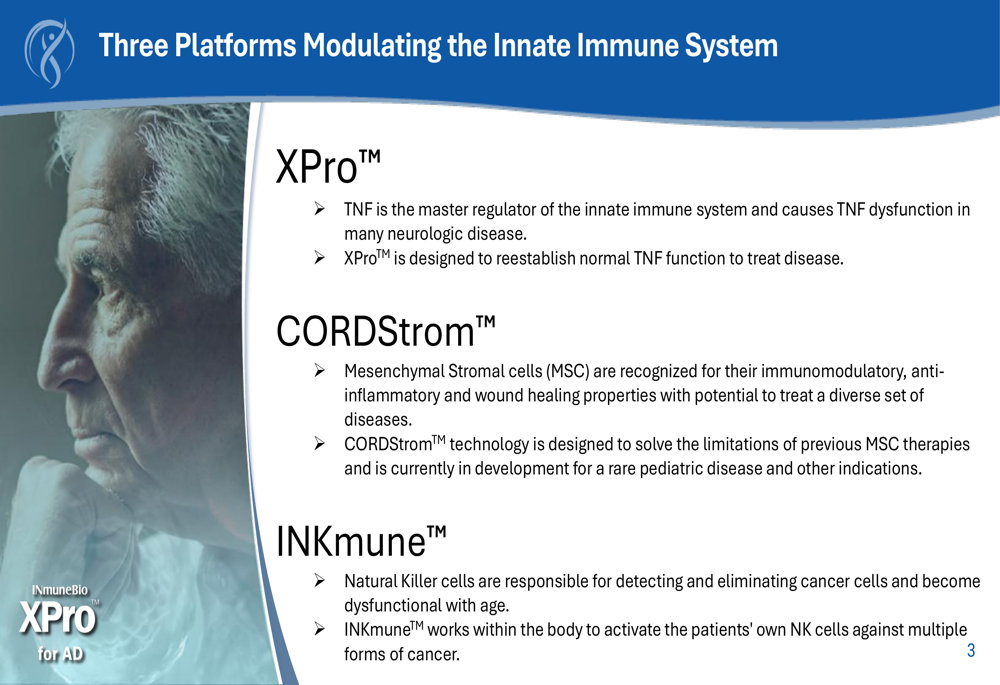
XPro: Novel Approach to Alzheimer’s Disease
INmune Bio’s lead program, XPro™, targets tumor necrosis factor (TNF) dysfunction in neurological diseases, particularly Alzheimer’s disease (AD). The company positions XPro as a selective inhibitor of soluble TNF that addresses neuroinflammation as a primary driver of AD pathology rather than merely a symptom.
The scientific rationale for this approach is supported by multiple lines of evidence linking TNF to Alzheimer’s disease, as illustrated in the following data:

In the Phase 2 MINDFUL study, which enrolled 208 participants with early Alzheimer’s disease and biomarkers of inflammation, XPro demonstrated promising results in the "enriched population" (n=100) with two or more biomarkers of inflammation. While the primary endpoint was not met in the modified intention-to-treat population, the enriched population showed favorable trends across multiple endpoints.
The following graph shows the primary and key secondary endpoint results for the enriched population:

Most endpoints favored XPro treatment in the enriched population, with effect sizes (Cohen’s D) ranging from 0.05 to 0.27 across various measures:
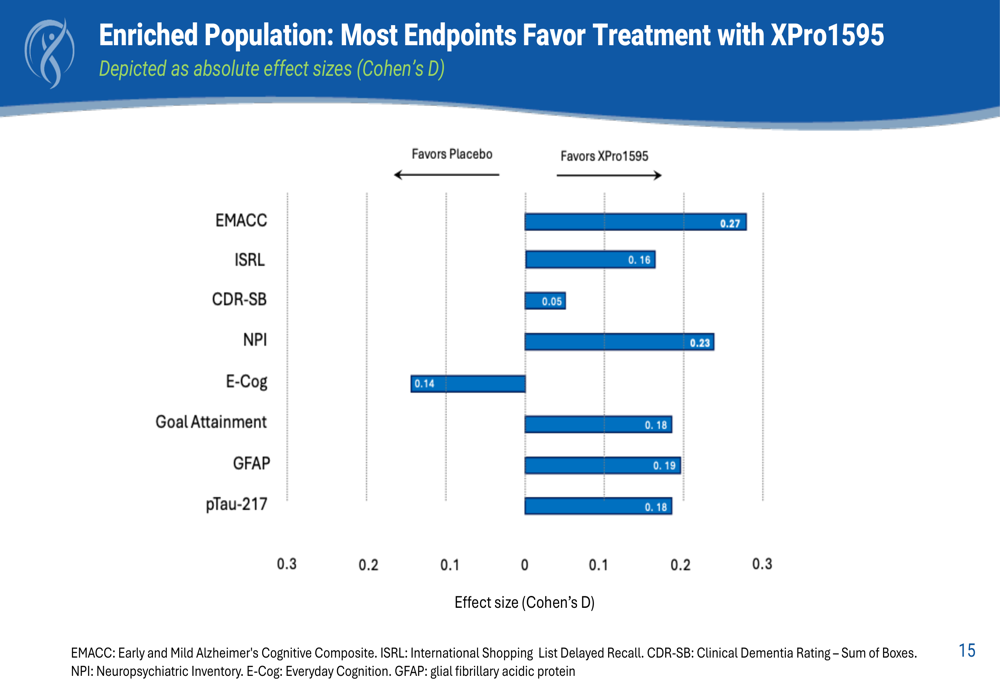
Notably, XPro demonstrated a favorable safety profile with no cases of ARIA (amyloid-related imaging abnormalities), a significant safety concern with other Alzheimer’s treatments. The most common treatment-emergent adverse events were injection site reactions.

CEO RJ Tesi emphasized during the Q1 2025 earnings call that "neuroinflammation is no longer viewed as a side effect of Alzheimer’s disease pathology, but a significant driver of that pathology." The company plans an End of Phase 2 meeting with the FDA, EMA, and MHRA in October 2025 to discuss the path forward.
CORDStrom: Addressing Rare Pediatric Disease
INmune Bio’s second platform, CORDStrom™, utilizes mesenchymal stromal cells (MSCs) with immunomodulatory and wound-healing properties. The company is developing this therapy for recessive dystrophic epidermolysis bullosa (RDEB), an ultra-rare genetic disease characterized by extreme skin fragility and chronic wounds.
The following slide provides context on RDEB and its market opportunity:
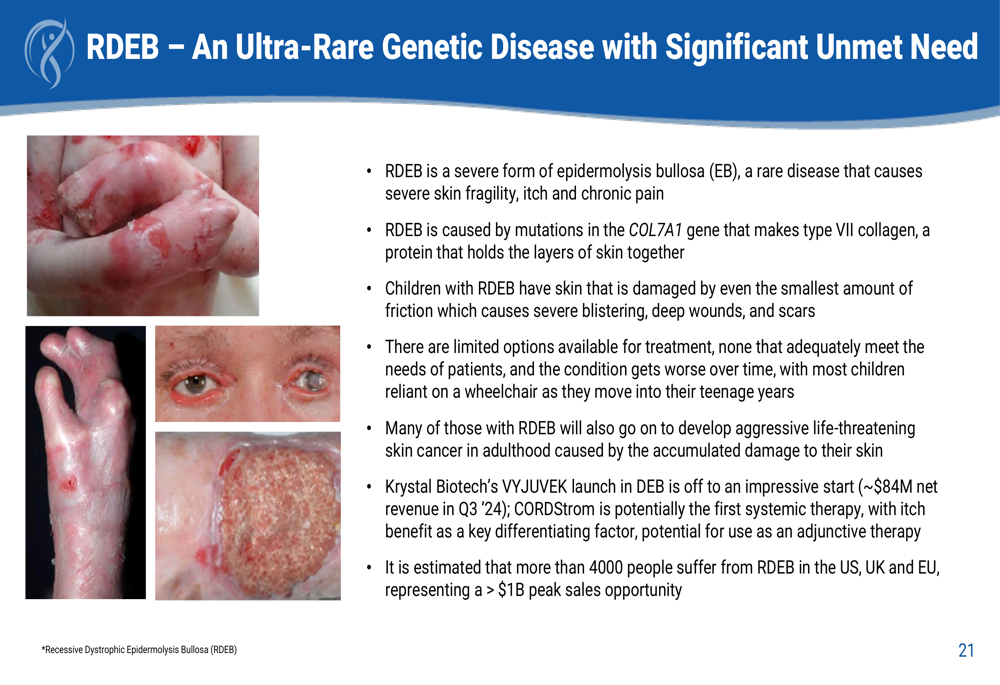
The Mission EB Phase 2 trial, completed at Great Ormond Street Hospital, demonstrated that CORDStrom was well-tolerated with beneficial effects on multiple endpoints, including the Itch Man Scale, a clinically meaningful measure in RDEB patients.
The following graph shows the positive impact of CORDStrom on itch in various patient subgroups:
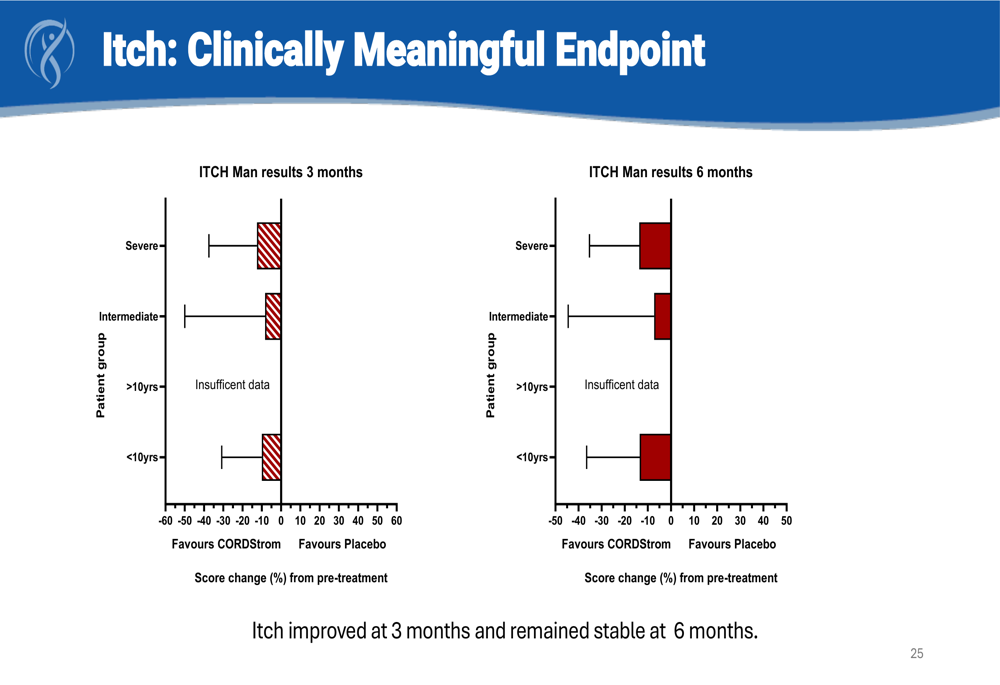
INmune Bio plans to file a Biologics License Application (BLA) in the US and a Marketing Authorization Application (MAA) in the UK/EU in the first half of 2026. With an estimated 4,000 RDEB patients in these regions, the company sees a potential peak sales opportunity exceeding $1 billion.
INKmune: Innovative Approach to Cancer
The company’s third platform, INKmune™, is an off-the-shelf NK cell therapeutic candidate that converts resting NK cells into cancer-killing memory-like NK cells. INKmune is currently being evaluated in a Phase 1/2 trial for metastatic castration-resistant prostate cancer (mCRPC).
The following slide outlines the trial design:
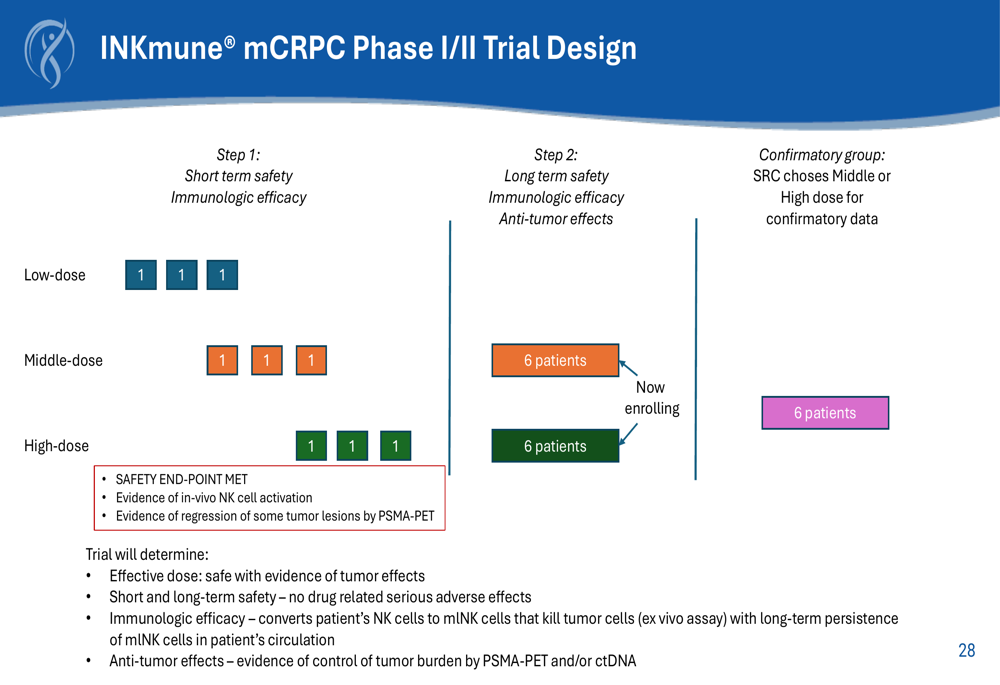
Early results from the trial have shown evidence of in-vivo NK cell activation and regression of some tumor lesions by PSMA-PET imaging. The company is continuing to enroll patients in the high-dose cohort and expects to complete Phase 2 enrollment in 2026.
Financial Position and Outlook
As of Q1 2025, INmune Bio reported a cash position of $19.3 million, which management believes is sufficient to fund operations through Q3 2025. The company has reduced its research and development expenses to $7.6 million in Q1 2025 from $8.7 million in the same period last year, contributing to a narrowed net loss.
With a current ratio of 3.14, INmune Bio maintains strong short-term liquidity. However, the company will likely require additional funding to advance its programs through later-stage clinical trials and potential commercialization.
The company’s anticipated milestones for 2025-2026 include:
- XPro: End of Phase 2 FDA meeting for Alzheimer’s disease
- CORDStrom: BLA/MAA submission for RDEB
- INKmune: Completion of Phase 2 mCRPC enrollment and reporting of open-label Phase 2 data
Market Perspective
Despite the promising clinical data presented across all three platforms, INmune Bio’s stock has experienced significant volatility. While shares delivered an impressive 51.82% year-to-date return as of the Q1 2025 earnings report, the stock remains well below its 52-week high of $11.64 and analyst price targets.
The 15.77% premarket drop following the August presentation suggests investors may have concerns about the company’s path to profitability or the regulatory hurdles ahead. According to the earnings report, analysts don’t expect profitability this year, despite upward revisions to earnings estimates.
As INmune Bio advances its three-platform strategy, investors will be closely watching upcoming regulatory interactions, particularly the End of Phase 2 meeting for XPro, which could provide clarity on the path to potential approval for the company’s lead asset in Alzheimer’s disease, a market with significant unmet need and commercial opportunity.
Full presentation:
This article was generated with the support of AI and reviewed by an editor. For more information see our T&C.
